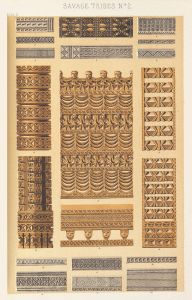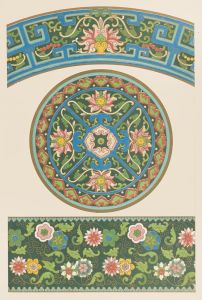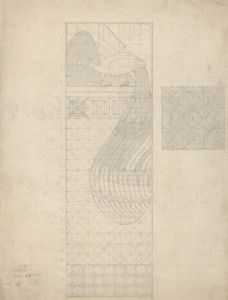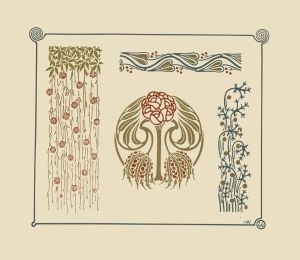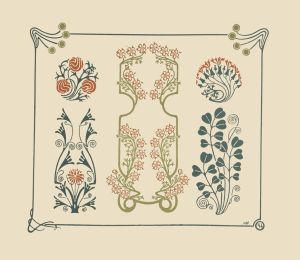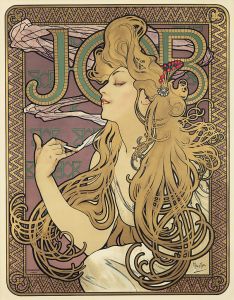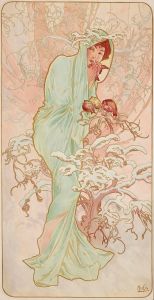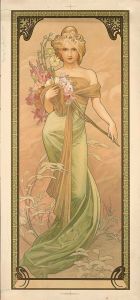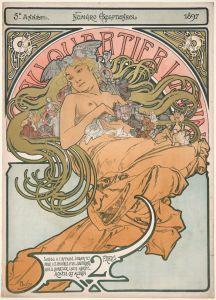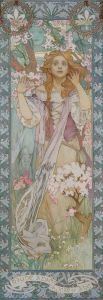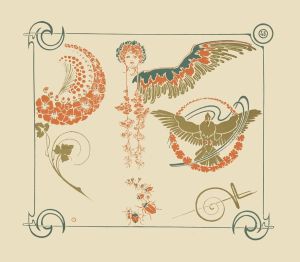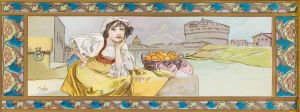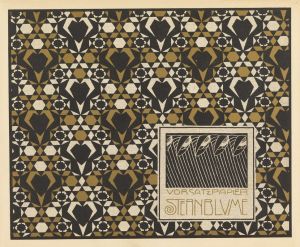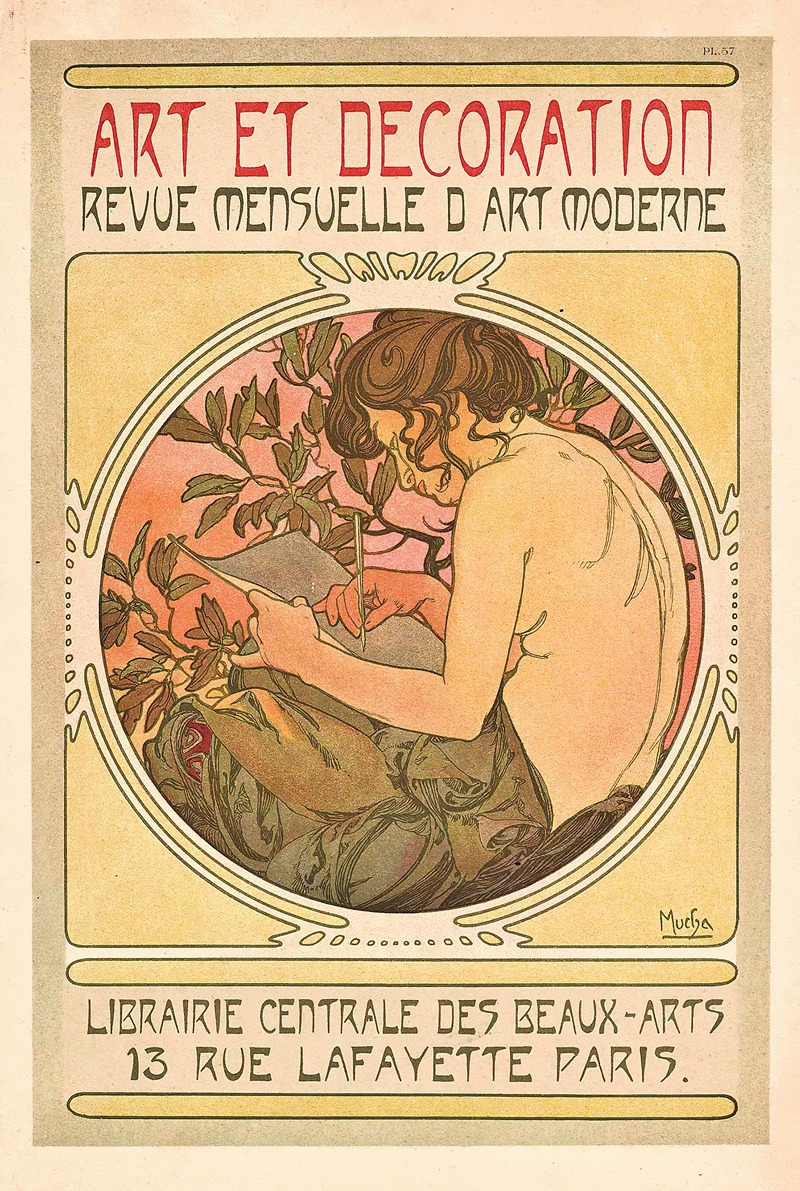
DOCUMENTS DÉCORATIVES
A hand-painted replica of Alphonse Mucha’s masterpiece DOCUMENTS DÉCORATIVES, meticulously crafted by professional artists to capture the true essence of the original. Each piece is created with museum-quality canvas and rare mineral pigments, carefully painted by experienced artists with delicate brushstrokes and rich, layered colors to perfectly recreate the texture of the original artwork. Unlike machine-printed reproductions, this hand-painted version brings the painting to life, infused with the artist’s emotions and skill in every stroke. Whether for personal collection or home decoration, it instantly elevates the artistic atmosphere of any space.
"Documents Décoratifs" is a seminal work by the renowned Czech artist Alphonse Mucha, published in 1902. This portfolio is a comprehensive collection of Mucha's decorative designs and serves as an instructional guide for artists and designers. Mucha, a leading figure in the Art Nouveau movement, was known for his distinctive style characterized by intricate patterns, elegant lines, and harmonious compositions. "Documents Décoratifs" encapsulates these elements, offering a glimpse into the artistic principles that defined Mucha's work and the broader Art Nouveau aesthetic.
The portfolio consists of 72 plates, each showcasing a variety of decorative motifs, including floral patterns, ornamental borders, and stylized figures. These designs were intended to be used as templates or inspiration for various forms of applied arts, such as textiles, wallpaper, jewelry, and furniture. Mucha's intention was to provide a resource that could be utilized by craftsmen and designers to elevate the aesthetic quality of everyday objects, thereby integrating art into daily life.
Mucha's approach in "Documents Décoratifs" reflects his belief in the unity of art and design. He was a proponent of the idea that art should not be confined to galleries and museums but should be accessible and integrated into all aspects of life. This philosophy is evident in the practical nature of the portfolio, which was designed to be a tool for education and inspiration.
The influence of "Documents Décoratifs" extended beyond its immediate practical applications. It played a significant role in disseminating the Art Nouveau style across Europe and beyond, contributing to its popularity and adaptation in various cultural contexts. The portfolio's emphasis on organic forms and natural motifs resonated with the broader Art Nouveau movement, which sought to break away from the rigid structures of academic art and embrace a more fluid and naturalistic approach.
Mucha's work in "Documents Décoratifs" is characterized by its meticulous attention to detail and its harmonious balance between form and function. The designs often feature flowing lines and curves, reflecting the natural world and emphasizing the beauty of organic forms. This approach not only defined Mucha's personal style but also became a hallmark of the Art Nouveau movement as a whole.
In addition to its artistic significance, "Documents Décoratifs" also holds historical importance as a reflection of the cultural and social changes occurring at the turn of the 20th century. The Art Nouveau movement, with its emphasis on craftsmanship and design, emerged as a response to the industrialization and mass production of the era. Mucha's work, including this portfolio, championed the idea of art as a means of enhancing the quality of life and fostering a deeper connection between people and their environment.
Today, "Documents Décoratifs" is regarded as a classic example of Art Nouveau design and continues to be studied and admired by artists, designers, and historians. Its enduring appeal lies in its ability to capture the essence of a transformative period in art history while offering timeless inspiration for creative expression. Alphonse Mucha's legacy, as embodied in this portfolio, remains influential, underscoring the lasting impact of his vision and artistry on the world of design.





